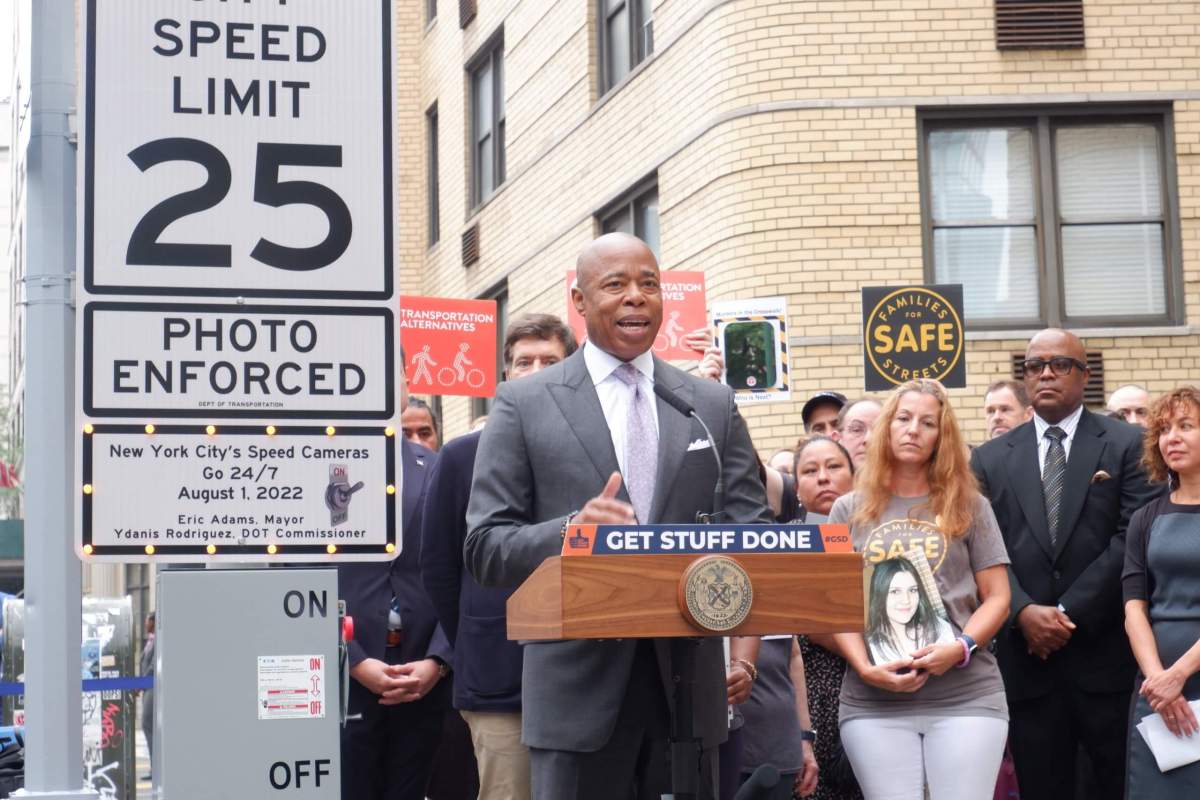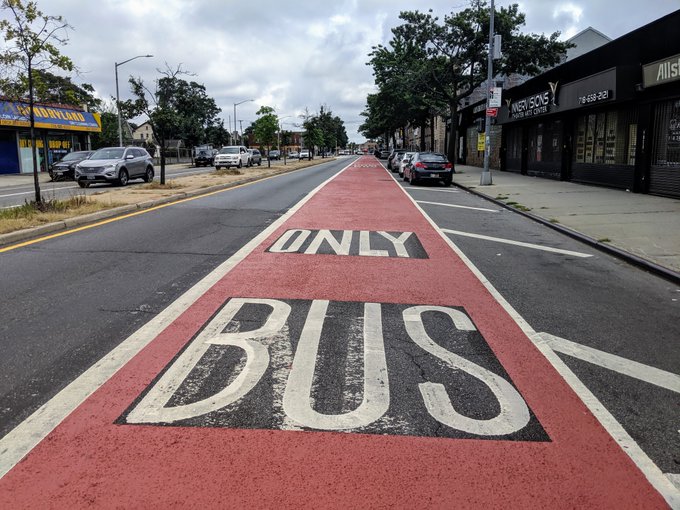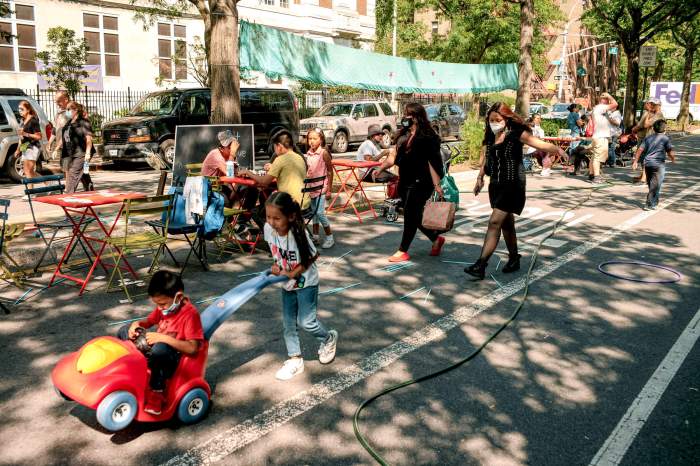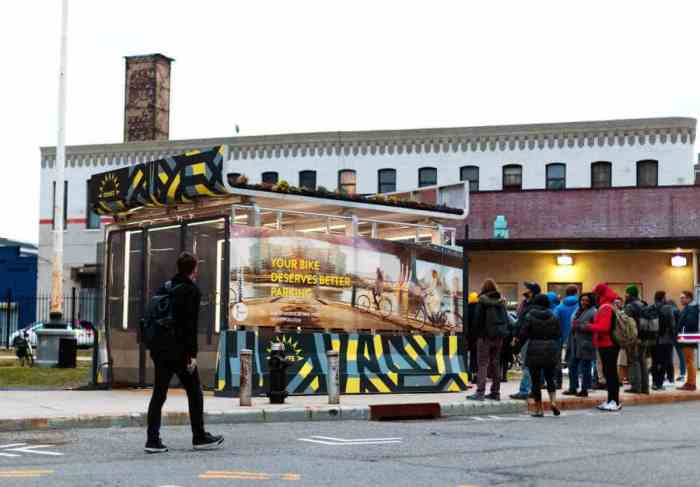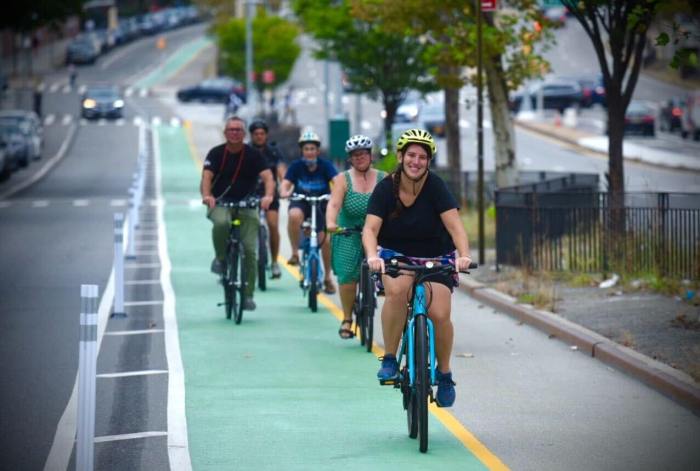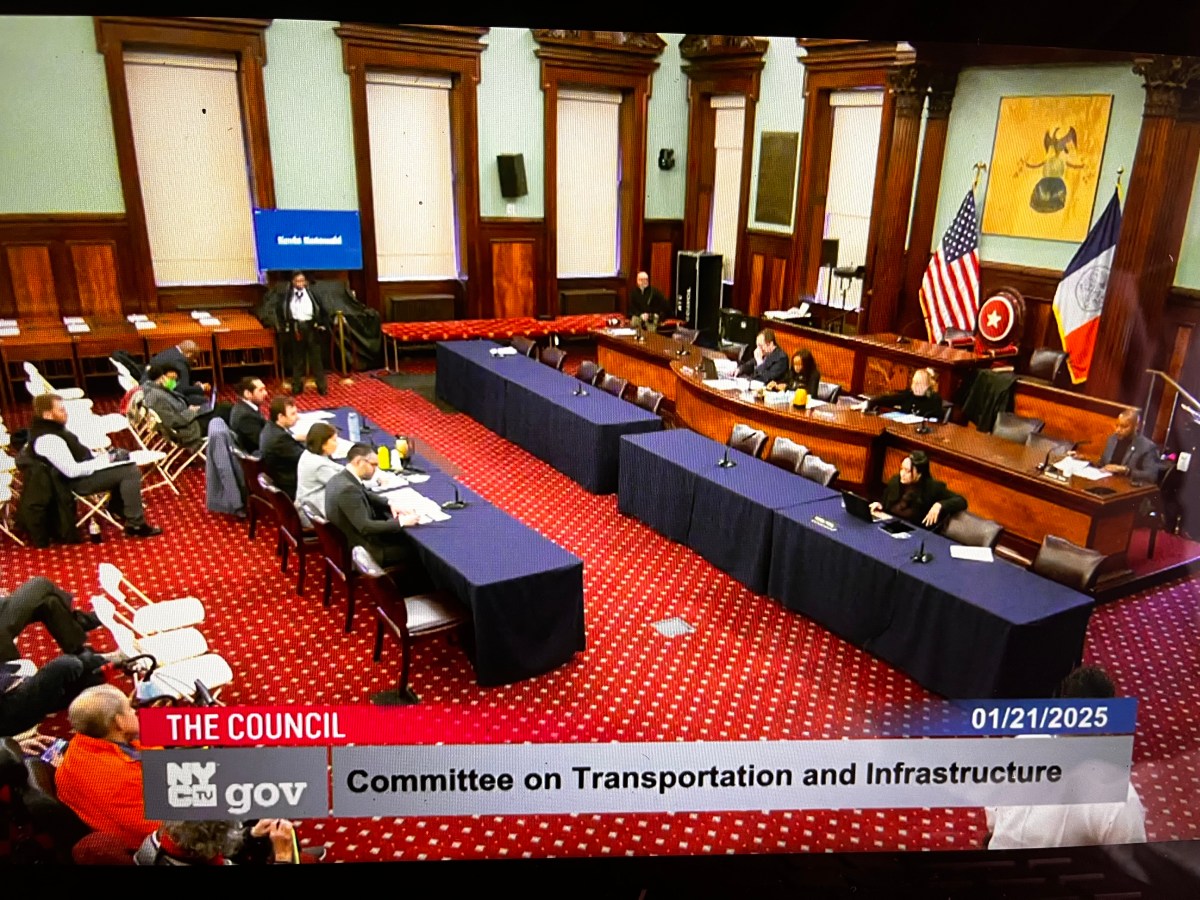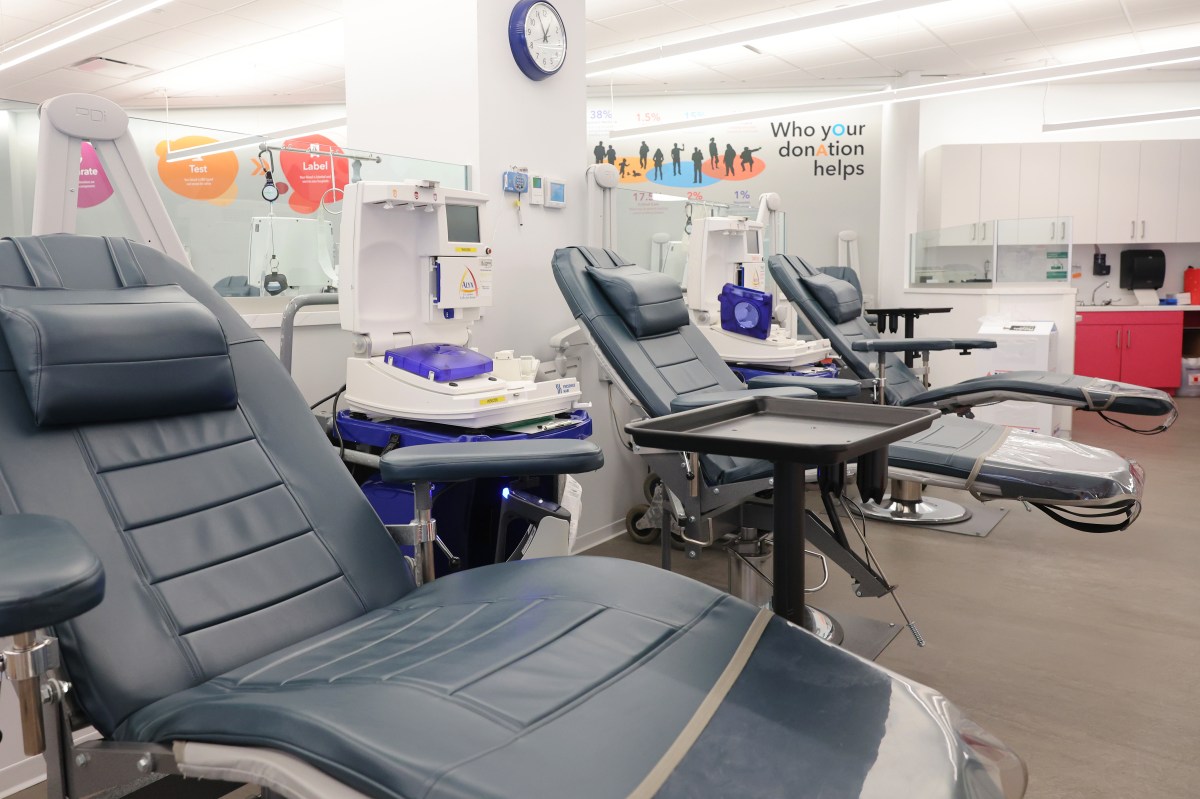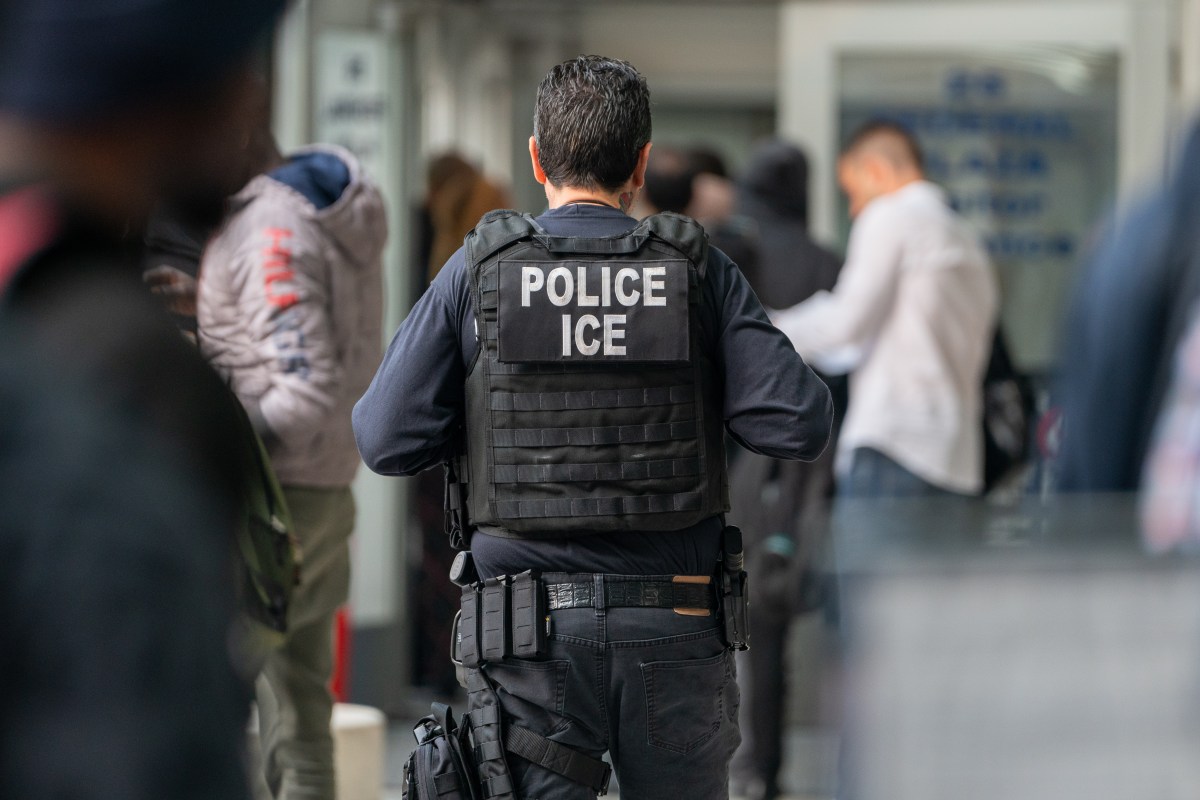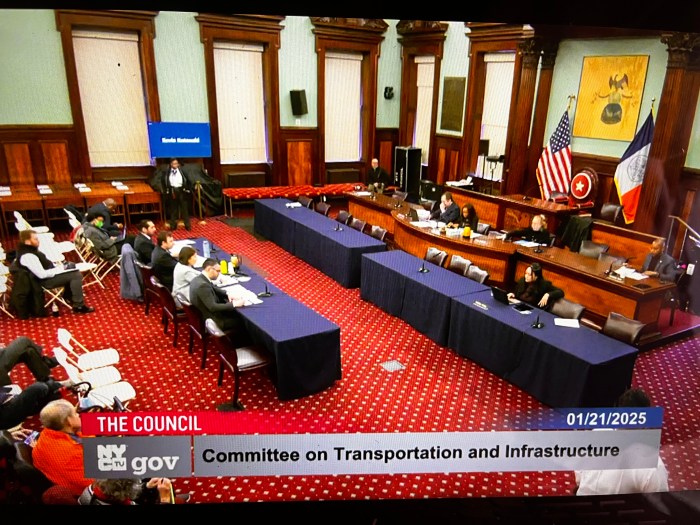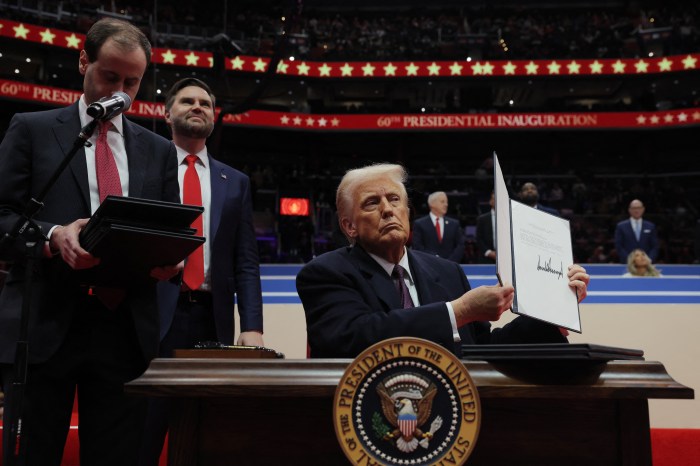Mayor Eric Adams defended his administration’s move to reduce the hours of operation for a pair of busways uptown and in Queens Monday, saying the changes were in response to opposition by local leaders.
“There’s one thing that’s my trademark: I am going to always listen to communities,” Adams told amNewYork Metro at a press conference about speed cameras on Aug. 1. “The [Department of Transportation] commissioner heard from the community and we modified what we did with the bus lanes in that area.”
DOT reps told community groups in Washington Heights last month that the agency will shorten the schedule of the 181st Street busway by two hours, from 6 a.m.–8 p.m. instead of ending at 10 p.m., as officials plan to move the project out of the testing phase.
Similarly in Flushing, DOT cut the Main Street busway’s active time nearly in half from 24/7 to 13 hours a day after transitioning from a pilot project to being permanent.
In both instances, local business owners voiced opposition to the red-painted lanes which ban through traffic for car drivers in order to speed up the city’s notoriously-slow buses.
“Community leaders communicated with us, we heard them. We’re not going to be deaf to the voices of the people who actually live in the community and they use those buses,” Adams said.
But bus riders along 181st Street predominantly praised the busway, DOT found.
Trips were 32% faster along the four-block corridor, and rides also felt more frequent and faster for most commuters, according to agency stats.
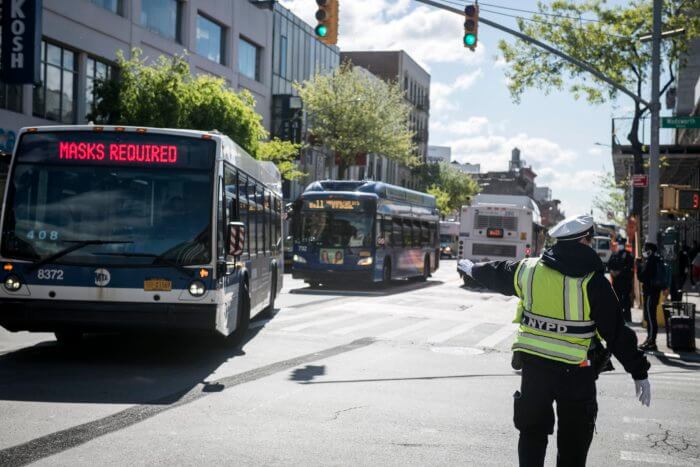
Launched in April 2021, the busway has brought some calm to the once noisy and chaotic thoroughfare, said Josh Goodman, a medical PhD student at Columbia University who lives just a few blocks away, and who is also a member of the transit advocacy group Riders Alliance.
“It did feel like a really unsafe place to be as a pedestrian and that’s really been improved,” Goodman told amNewYork Metro. “It’s not as loud because there are fewer cars just constantly, there’s less gridlock, there’s fewer cars trying to race to beat a red light, it feels much less unsafe.”
The Manhattanite was disappointed about the city’s decision to cut back the busway’s operation in favor of a minority of car owners, who make up less than a third of households in Washington Heights and neighboring Inwood, according to DOT.
“I think that bus infrastructure is really under-invested in, especially uptown,” Goodman said. “A lot of deference is given to car owners and what is perceived as a car culture uptown, even though it’s a small number of households that have cars.”
The chairperson of local Community Board 12, who also owns a restaurant on 181st Street, said the city should have gone further and restrict the busway hours to morning and evening peak travel times.
“People’s habits and customer’s habits have been disrupted by changing a more than 100-year-old commercial corridor,” said Eli Bueno. “People feel as though they can’t travel down the corridor without getting a ticket.”
Local Council Member Carmen De La Rosa told amNewYork Metro she was still waiting to see how the reduced hours pan out, but noted that bus upgrades were important for residents and visitors coming from across the river in the Bronx.
“I’m still deliberating, to be honest with you, I’d like to see how these new hours work,” the De La Rosa said.
“Ultimately it’s very important for us to have efficient busways and routes, because our community is very dependent on public transportation,” the pol continued. “If you’ve ever been to Washington Heights, you know that the topography here is brutal. Having above-ground connections is important.”
Adams said he will keep expanding the city’s bus lanes — as he is required to by a 2019 City Council law that sets annual minimums for new miles of bus and bike lane — but the mayor added that he wants to stay open to changes if locals don’t like city plans.
“We’re going to live up to our commitment, but we’re never going to create an administration where we’re not willing to modify, pivot, shift, and listen to community leaders,” he said.
The changes will affect travel times for some 68,000 average daily riders on five bus lines on 181st Street run by the state’s Metropolitan Transportation Authority.
A spokesperson for the MTA praised the mayor for making the busways permanent.
“The MTA appreciates the city’s ongoing commitment to bring dedicated bus lanes to New York City’s streets to speed up bus service for thousands of customers every day,” said Dave Steckel in a statement. “Making as many busways as possible permanent will improve bus speeds during the most impactful hours to our customers.”
Update (Tuesday, Aug. 2, 2022): This story has been updated to include comments from Council Member Carmen De La Rosa and Community Board 12 chairperson Eli Bueno.



